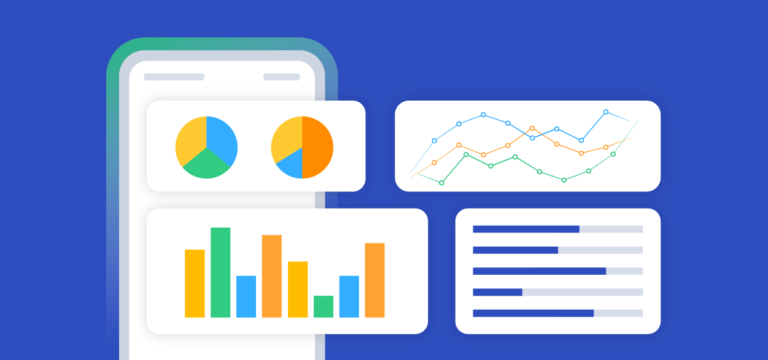Below is my daily approach on how to help a website succeed, not only GC and AI tools such as ChatGPT, Claude, or Perplexity, but real visitors as well. I will break it down to make it as simple as possible, going step by step. I will use simple terms to explain examples instead of showing code, so that it will be easier for you to use it.
The Vision: One Page, Three Audiences
Think of it this way: every page on a site has to optimize for Google, AI, and real human beings. Here’s how to do that.
- Broader title: A summary of the page has several facets. The reader should get the essence in a few seconds.
- Deeper subtitle: AI content detectors will miss the vital points of the text and will fail to understand its relevance. Dash board jargon, visual snapshots, and animations should be so simple that the reader/AI does not struggle to make sense of it.
- Clear and simple: A reader should never struggle to get the main goal of the page.
- Check relevance and usefulness: The page should be loaded before the reader gets to it, not while they are on the page.
- Set clear quotes: The page should break down complex topics. Simple, useful inquiries are the best way to achieve this.
Step by step, let’s break this down.
1. Crawlability Issues: Let the Bots Read Your Content Effortlessly
No 1. Crawlability Issues: Let the Bots Read Your Content Effortlessly
Do not forget about the objectives of not blocking valuable pages from the sight of search engines and their AI bots. Here is what to look for:
- For public pages, check that they are not blocked in the robots.txt file, have a success status code (such as 200, meaning the request is fulfilled), and that they link to themselves as the canonical version.
- Create XML sitemaps of different types such as sitemaps for regular pages and sitemaps for blog posts. Remember to update the “last modified” date whenever you change something.
- For pages that have filters or sorting such as “?sort=” or “?view=”, block those lower value sinks in robots.txt or don’t link to them to save the bots’ energy.
- Deal with 301 permanent redirects to resolve issues with old or duplicate URLs, such as from http to https as well as duplicate URLs.
- Provide the sitemap reference in your robots.txt. Block admin or checkout pages from all bots to start. Allow certain AI bots such as those from GPT, Claude or Perplexity to index the public parts and retain the private parts. If you want to prevent the Google AI from your content, block that specific crawler.
With the sitemaps, Google near real-time updates the “last modified” date.
For every entry in your sitemap, ensure that you’ve included the webpage address and the last date the webpage was edited.
2. Indexability: Direct Search Engines On What To Show
You want the search results to show only the best, most relevant version of every page. Tips include:
- Have only one definitive URL for every unique piece of content. No close substitutes should exist.
- On every page, make sure there’s a pointer to the authoritative web address.
- For pages you don’t want a user to search for, provide a “noindex but follow” directive and allow the bots to get to it.
- For multi page lists, assign a specific title to each list. Use numbered page links to navigate rather than endless scroll. \ \
3. Renderability: Keep The Basics Visible Without Extra Add-ons
Some bots and even AI search engines may not engage in JavaScript, therefore, your central data needs to be there first.
- Deliver the key content, as static or server files.
- It’s okay to add rich content afterwards, but the title and the overview should be the first things that the robots encounter.
- Images that are lower, but not those on top of the page, should be delayed in loading.
- Have reasonable alternatives for the pivotal parts that do not work if JavaScript is actuated.
To verify: Try and see the title, answer, and body text without the page using Javascript.
4. Site Speed and Core Web Vitals: Make it fast for everyone
Rankings improve and users are retained longer on the site for faster loading speeds. Make the main content available on the page under 2.5 seconds, with interactivity under 200 milliseconds, and no layout shifts under 0.1 milliseconds.
- Use AVIF and WebP for modern image formats, with the image pair specs, and proper screen dimensions.
- Use a content delivery network for fast speeds, advanced compression, and the latest web protocols
- Reduce JavaScript by postponing secondary load parts, removing unused pieces, and keeping critical pieces at the start
- Custom fonts should replace the text with a high speed swap, so the text does not vanish with customizable speeds.
5. Information Architecture: Arrange for Simple Structure
A logical structure assists bots, AI, and users in navigation.
- Help users understand the grouping of topics: Provide a comprehensive overview on the main page with detailed subpages.
- Use breadcrumb navigation (like Home > Guides > SEO) and a helpful footer with essential links.
- Provide descriptive internal links that point to relevant explainers.
- Ensure URLs are short, unchanging, and all in lowercase, such as /technical-seo/ai-guide.
6. Prepare Pages for AI: Optimize for Quick Answers
AI usually pulls short bites of info. For core pages,
- Start with 2-3 sentences and answer the question in brief at the beginning.
- Put out a Key Points section with figures, definitions, crucial dates, etc.
- Put questions in the FAQ that come from actual queries that are being asked.
- Use schema markup to indicate that the page is an article, an FAQ, a how-to, a product page, etc and provide information about the author or the organization.
- Provide links to other relevant, reliable pages and indicate the date that the page was last updated from your own or credible experienced sources.
Keep your sections brief—40 to 120 words is ideal—with single topics to correspond with the headings. This will make it simpler for both the AI and the reader.
7. Useful Markup: Simple Means of Classifying Your Content
Markup adds content to your pages to better explain it to the search engine and the AI. The article markup includes the title and the author, the date and the page it was published and later updated, and relevant publisher information with links such as with Wikipedia or other similar sources, as well as the main page ID.
For the FAQs, format and delineate the questions with answers. For example: What is technical SEO? Give a brief explanation.
The how-to guides need to be renamed with each step being titled with a summary saying what it is about and how it relates to the rest of the steps such as ‘Generatin a Sitemap’, ‘Link it’, ‘Update with Fresh Dates’.
8. Controlling AI Crawlers: Manage Access to Be Seen
- Allow access to some AI bots to the public information but disallow them from the hidden parts.
- If you want to disallow the use of your data for training AI, block certain crawlers in your robots file.
- Include a page with your content license which can be linked from the footer.
Extra Idea: Make a very basic feed file such as RSS and a changelog page. These are beneficial for helping AI and search engines quickly detect updates.
9. Styles of Content That are Used AI Answers
To be differentiated from the rest when being summarized or put into a box:
- Start with a description defining what it is, for example, “Technical SEO is a type of SEO where you are concerned about the husbandry of the website’s infrastructure.”
- Numbered points for steps in processes.
- Lists of pros and cons and comparisons with strong headings.
- Tables for the description or prices of goods.
- FAQs around common questions like who, what, why, how, how much, or how long.
10. Optimisation of Word Entities: Link to Bigger Knowledge
To gain trust, link with known facts.
- For authors or about pages, include the organization or person and link to their Wiki, LinkedIn, or business directories to create a profile.
- Use the same names, addresses, and IDs without fail.
- Link to reputable external sources — the AI likes corroborated information.
11. Image and Video Optimization
- Descriptively name the files and provide explanatory and factual alt text for the images.
- Place captions beneath images; include complete text versions of the video content.
- For image and video files, insert metadata and if there is a large volume of media, make separate sitemaps.
12. Attendance and Logs: Be Proactive on Problems
- Use Google’s Search Console to analyze what is indexed, sitemaps, speed scores, FAQs, and other features.
- Check server logs to find errors, the absence of busy bots, and AI.
- Record changes with the aim of conservatively assessing the changes to traffic volume.
- Set targets such as 170KB compressed JavaScript per page, and a total of 1MB for the top images compressed.
13. 30-Day Plan: Create incrementally
Week 1: Set The Record Straight
- Primary domain, page, redirections, language markers, robot rules, and sitemaps with update dates, set the rest of issues.
- Remove unnecessary links, check many important pages, and delete duplicates, pages with the same content.
Week 2: Fix Loading and Display Issues
- Ensure main textual content is served directly from the server.
- Correct images of all formats and sizes, takt behind extraneous scripts, manage fonts, and implement a CDN.
Week 3: Incorporate Structure and Identify Tags
- Implement the appropriate markup for articles, FAQs, and how-tos on the main pages.
- Add fact boxes and hyper summaries.
- Add authors and organizations, credits, and published and updated dates.
Week 4: Links and Structure
- Create main overview pages with links to detailed pages.
- Add breadcrumbs, related links, and summary tables.
- Create and publish a changelog and content feed, submit sitemaps to Google, and afterward review the content thoroughly.
14. Pre-Publishing: Final Review
- It passes basic load tests on slow connections and achieves the specified speed goals.
- The primary response does not require additional prompts to surface.
- The primary URL is correctly set, and the search instructions are appropriate.
- There are no markup errors.
- There is no unnecessary information like summaries and primary facts.
- Updated date appears on all the required surfaces.
15. Things to Monitor Implementing
- Uninterrupted scrolling with no page options.
- Applications that render everything client side, leaving nothing for bots to work with.
- Styled text that acts as a heading, which is not a heading.
- Answers that are concealed behind advertisements or buttons.
- Are sales pitches considered too complex? Tell me when instructions are needed.
Convenient Ideas for Reuse.
In the “Key Facts” area, create a concise list that includes the last updated date, speed targets, and the sitemap location.
For language versions, provide links that are default and specify each language.
Why This Works Great for AI and Search.
- Quick answers at the top are easy to quote.
- Captions separate the main topics, as in FAQs.
- New documents are date-stamped to show they are current.
- Links to well-known documents add trust.
- Feeds and logs help to find variations quickly.
Also you can use a company that does it for you. TechnicalSEOService.com or screamingFrog can fix all technical seo problems with a fair price.







